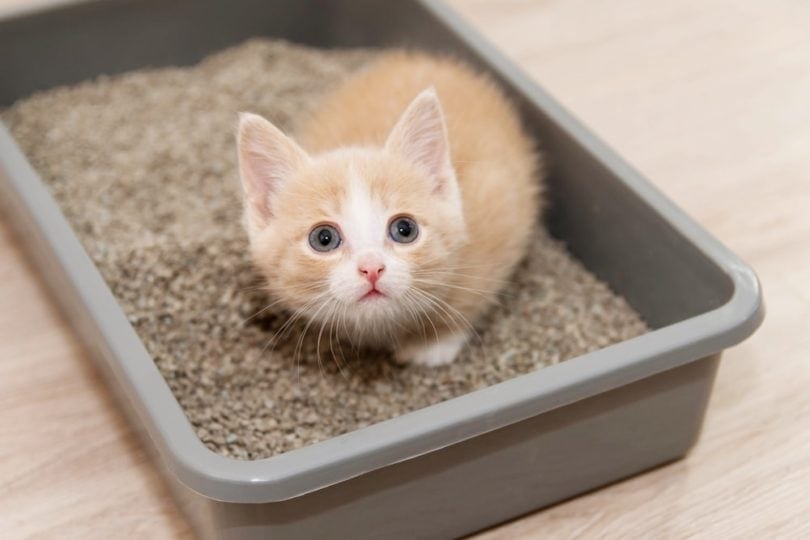Introduction
A good cleaner and a decent range of litter boxes will take care of all your cleaning problems, you will have developed friendly pets who know their boundaries (why should you clean a cat’s butt after it has done its duties?), and all that gross scent can be gone forever. Although it is more linked to cats, litter boxes can be used for some breeds of dogs as well. This is a step-by-step guide on how to take you through the process of teaching your cat and dogs litter box aesthetics.
Teaching Your Cat to Use a Litter Box
1. Choose the Right Litter Box
- Size Matters: Remember that it is important to choose a larger litter box so the cat can actually move around. A box that is too small will discourage use If you have large cat (American Bobtail) or multiple cats, then choose a larger box.
- Open vs. Covered: Many cats do not mind either kind of box, but some like the privacy of a covered box. This will depend on your cat’s preference, but here are some of the top picks: Boxes with lids can hold back the odors, but these boxes should be ventilated.
2. Select the Right Litter
- Texture and Scent: Cats Have Their Preferences when it’s Down To Litter You can switch later to scented or coarse-grained litter but, initially keep it cheap and simple without being too overwhelming. Try different types of litter — clumping, non-clumping and natural litters (such as pine or corn) all work, but one type may simply appeal to your cat better.
- Depth: About 2-3 inches of litter should be used to fill the box A cat will never piss in a litter box that smells like it has not been cleaned for days but can get freaked out by one smelling too clean or fresh. Make it a point to keep the depth of the litter uniform so that your cat does not get confused.
3. Placement is Key
- Quiet Location: The litter box must be located somewhere quiet where your cat easily feels at ease. Never close your cat in a room with loud appliances, near high-traffic areas or other things that can scare them.
- Away from Food: A cat is less likely to eat where they eliminate. Avoid placing the litter box next to their bowls of food and water — this can be unsanitary (considering that your cat digs in his litter) and might cause her to avoid it.
4. Introduce Your Cat to the Litter Box
- Gentle Introduction: Begin by gently placing your cat in the litter box and allowing them to smell it. Do this after meals and sleep to help them start using it. Do not push your cat into the toilet bowl, this will result in a negative experience.
- Positive Reinforcement: Praise and reward your cat every time it uses the box. This rewards good behavior and promotes future use. Give treats, petting, or verbal praise right after your cat uses the box.
5. Maintain Cleanliness
- Daily Scooping: Litter Box Should Be CleanNonclumping unfilled can be cleaned out totally of the whole pan during the day. The dirtier the box, the more likely your cat will avoid using it. It also allows you to keep a check on your cat’s health by noticing any abnormal changes in their bathroom behavior.
- Regular Cleaning: The litter box should be cleaned every week (clean with mild soap and water). Do not utilize solid chemicals that might discourage your feline. Be sure the box is dry all the way through before you pour in fresh litter.
Teaching Your Dog to Use a Litter Box
1. Choose the Right Litter Box
- Size and Durability: If you live in an apartment or urban area without a yard outside, it is recommended to choose a larger and more durable litter box designed specifically for dogs. Note: the crate must be large enough for your dog to easily turn around. For larger dogs, you may want to use a plastic storage container or a dog litter box.
- Low Entry: Make sure the box has a low entrance for easier entry; older and smaller dogs can easily enter without difficulty. If needed, you can change the height of a container by dropping one side lower.
2. Select Appropriate Litter
- Dog-Safe Litter: Designate a separate area as your doggie litter box using the appropriate type of dog-safe cat litter, or use training pads if that is what your pet prefers. Cat Litter (not harmful) Dog-specific litter is often made of safe, absorbent materials like recycled paper or wood pellets.
- Absorbent Materials: Use materials that are high absorbents to avoid odor and easy clean-up. Some dogs also do well with training pads or grass patches.
3. Placement is Key
- Consistent Location: Keep the litter box in the same spot so your dog can find it with no problem. Dogs need routine and structure. Make sure your dog can easily locate this area to return there.
- Quiet and Private: Select an area in your home that is quiet, and where your dog can be undisturbed. The box should not be placed next to noisy appliances or in frequent passage areas.
4. Training Your Dog
- Command Training: At the same time, when you are putting the dog in the litter box, use a command. Let’s assume it is “go potty”. It helps them to pair the command with action. Use this command every time to encourage the behavior.
- Positive Reinforcement: Whenever your dog pees in the litter box, give him a treat + compliment. Acquire the habits of positive reinforcement. Reinforce the behavior by giving them a treat or some praise immediately.
- Frequent Breaks: In the beginning, bring your dog out to the loo often, especially after meals, naps and playing. Success happens when you have constant opportunities. Moving forward, reduce the frequency as your dog learns how to use the box independently.
5. Maintain Cleanliness
- Daily Cleaning: Cleaning the litter box once or twice a day helps reduce odors to keep the area clean. A clean box is more appetizing for your dog. Regular cleaning will also allow you to keep an eye on your dog’s health as changes in their elimination habits can indicate a problem.
- Regular Replacement: To keep the area clean and welcoming, litter or training pads should be replaced regularly. If you are using a litter box, make sure it is absolutely dry before refilling it with more litter or pads.
Troubleshooting Common Issues
For Cats
- Avoiding the Litter Box: Do not use a small and enclosed box; for some, it is best to change the type of sand or location. Make sure the box is clean and doesn’t smell. A cat that, while it has a clean box, may have other preferences — may be clumping litter over non-clumping; maybe a natural material like corn or pine
- Accidents Outside the Box: Wash the cage and put back the litter box somewhere easily accessible. If you have more than one cat litter box it may not be enough. It is important to note that stress, some medical problems or a change in the environment can also be potential causes of litter box aversion.
For Dogs
- Resistance to Training: Training exercises tend to take time, especially for new dog owners. Give more rewards, and you may also coach him during the training period. If your dog keeps on refusing, ask for help from a professional trainer or the vet for more support.
- Accidents: Clean accidents quickly with an enzymatic cleaner to eliminate odors and prevent future accidents. Go back and look at the training and make changes. Be sure to give your dog plenty of chances to use the box and don’t have hours in between where it must hold its bowels.
Conclusion
Unfortunately, teaching your cat or dog where to go potty is not easy; it takes time, patience and consistency. If you select the right litter box and litter, put it in a suitable location, and keep up with maintaining hygiene, your pets will likely learn to use a litter box without issues. It will also make your house cleaner and which is good for you as well as it is a user- and pet-friendly vacuum cleaner.




